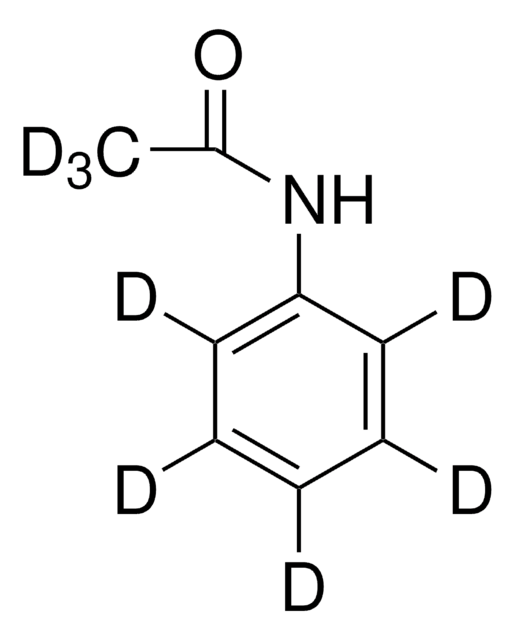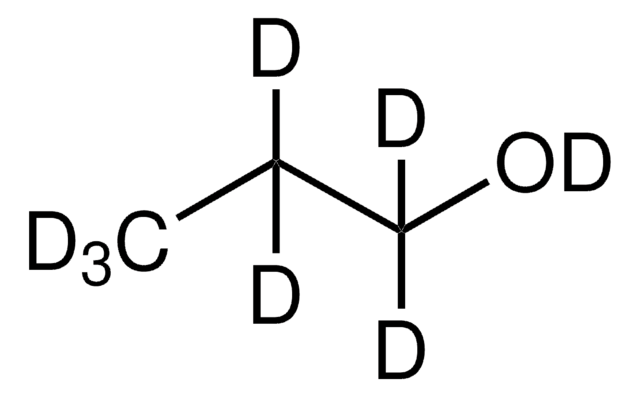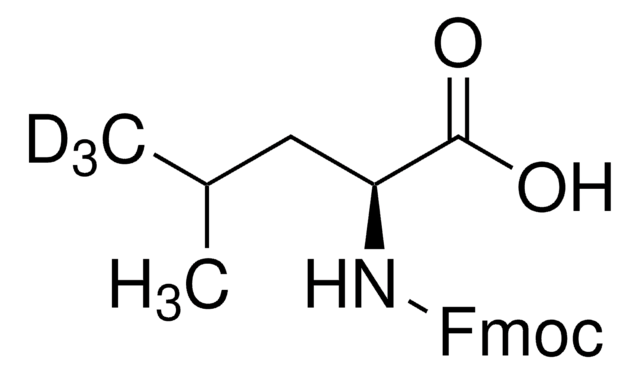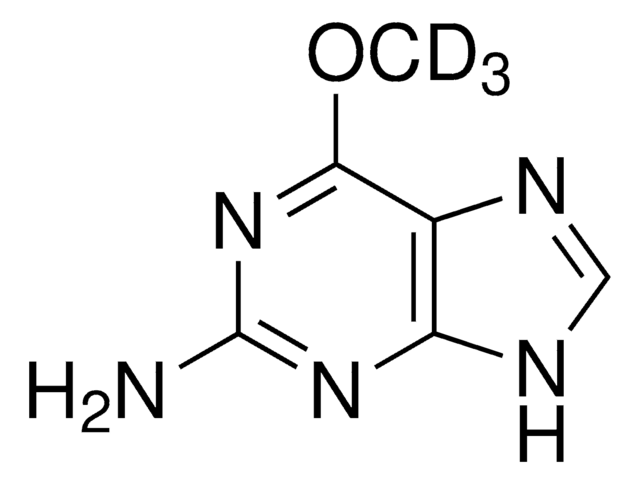Key Documents
736171
1,4-Dioxane solution
NMR reference standard, 40% in benzene-d6 (99.6 atom % D), NMR tube size 5 mm × 8 in.
About This Item
Polecane produkty
klasa czystości
NMR reference standard
analytical standard
stężenie
40% in benzene-d6 (99.6 atom % D)
metody
NMR: suitable
rozmiar probówki do NMR
5 mm × 8 in.
grubość ścianki probówki do NMR
0.24 mm , ultra-thin wall
format
single component solution
ciąg SMILES
C1COCCO1
InChI
1S/C4H8O2/c1-2-6-4-3-5-1/h1-4H2
Klucz InChI
RYHBNJHYFVUHQT-UHFFFAOYSA-N
Szukasz podobnych produktów? Odwiedź Przewodnik dotyczący porównywania produktów
Zastosowanie
- Catalytic Oxidation of 1,4-Dioxane: Fe-ZSM-5 zeolite catalysts were investigated for the heterogeneous Fenton oxidation of 1,4-dioxane, evaluating the effects of Si/Al ratios and contributions of reactive oxygen species. This study highlights the use of 1,4-dioxane solutions in environmental remediation technologies, particularly in removing persistent organic pollutants from wastewater (Tian et al., 2024).
- Groundwater Remediation: Research focused on the cometabolism of chlorinated volatile organic compounds and 1,4-dioxane in groundwater, employing 1,4-dioxane as a model compound to study the biodegradation processes and interactions with microbial communities. This study is crucial for developing effective strategies for groundwater treatment and ensuring the safety of pharmaceutical water sources (Clark & Rhea, 2023).
- Structural Analysis of Hyaluronan: The study used a mixed solvent system including 1,4-dioxane for the structural analysis of hyaluronan oligosaccharides, forming double-helical duplexes. (Kolaříková et al., 2024).
Cechy i korzyści
Ilość
Hasło ostrzegawcze
Danger
Zwroty wskazujące rodzaj zagrożenia
Zwroty wskazujące środki ostrożności
Klasyfikacja zagrożeń
Aquatic Chronic 3 - Asp. Tox. 1 - Carc. 1A - Eye Irrit. 2 - Flam. Liq. 2 - Muta. 1B - Skin Irrit. 2 - STOT RE 1 - STOT SE 3
Organy docelowe
Blood, Respiratory system
Zagrożenia dodatkowe
Kod klasy składowania
3 - Flammable liquids
Klasa zagrożenia wodnego (WGK)
WGK 3
Temperatura zapłonu (°F)
53.6 °F - closed cup
Temperatura zapłonu (°C)
12 °C - closed cup
Wybierz jedną z najnowszych wersji:
Masz już ten produkt?
Dokumenty związane z niedawno zakupionymi produktami zostały zamieszczone w Bibliotece dokumentów.
Produkty
Sigma-Aldrich.com provides an informational article regarding the use of stable, labeled isotopes as NMR reference standards.
Wzorce referencyjne NMR zapewniają prawidłowe działanie urządzenia. Sprawdź kluczowe parametry operacyjne tych wzorców, takie jak pw90, czułość, rozdzielczość i kształt linii.
Nasz zespół naukowców ma doświadczenie we wszystkich obszarach badań, w tym w naukach przyrodniczych, materiałoznawstwie, syntezie chemicznej, chromatografii, analityce i wielu innych dziedzinach.
Skontaktuj się z zespołem ds. pomocy technicznej











